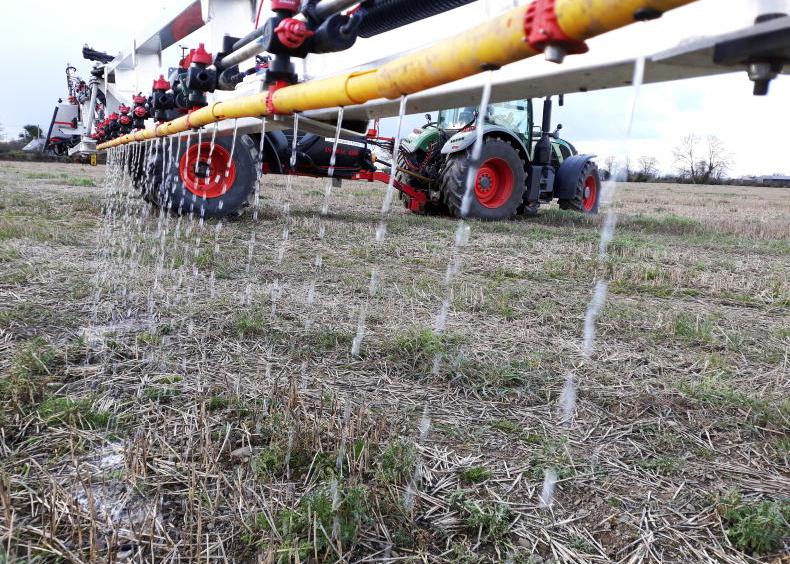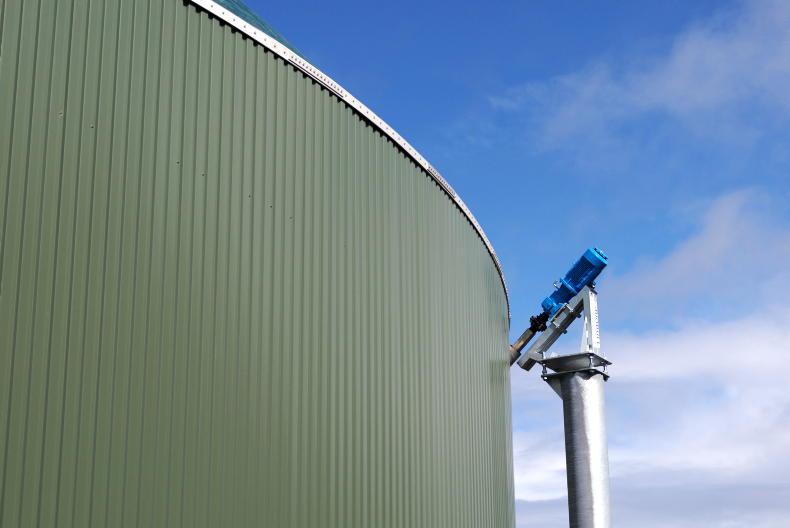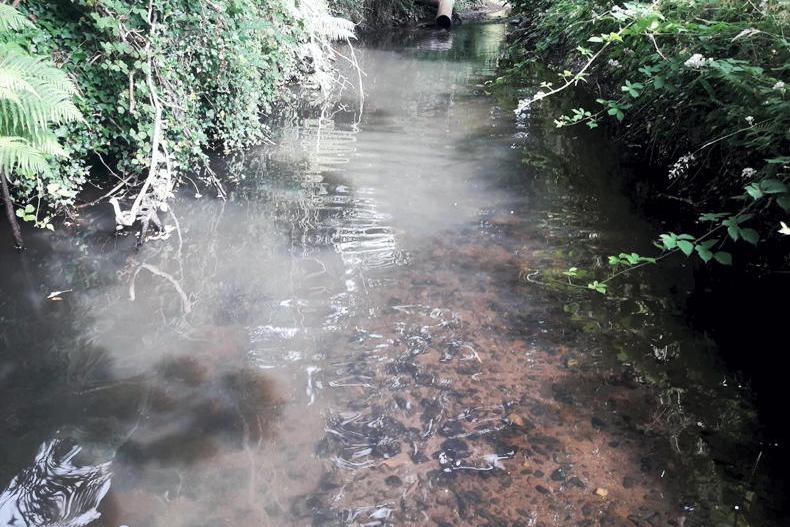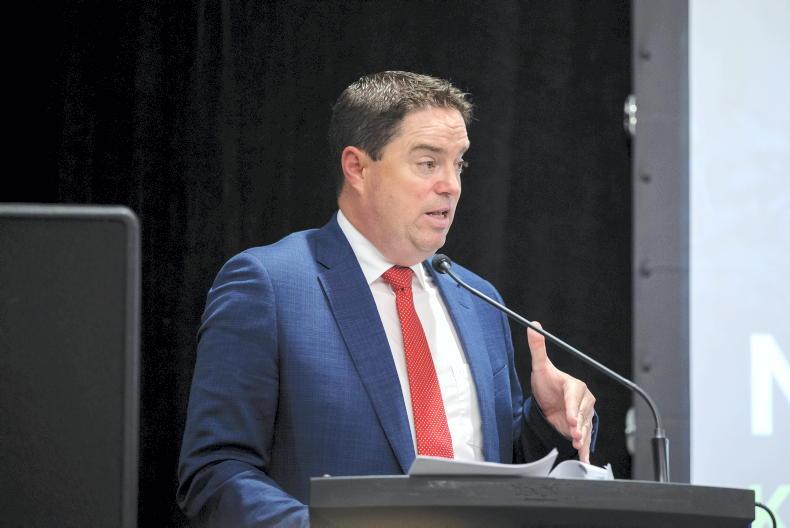Ministers are holding a special cabinet meeting this Monday to adopt the all-Government climate plan prepared by Minister for Climate Action Richard Bruton, which is expected to include changes to farming practices such as land use, fertilisation and livestock breeding and feeding for the next decade.
Minister Bruton has previously said that the plan would set a specific target for farming within the overall obligations agreed for Ireland at EU level across agriculture, heating and transport, taken together as the so-called effort-sharing sector.
The specific objective for farming could be as low as 10%
The Irish Farmers Journal understands that this will be much lower than the 30% cut in net emissions mandated by 2030 across the effort-sharing sector and the specific objective for farming could be as low as 10% – still a challenge against the backdrop of increasing production.
This is understood to be achieved by allocating all allowable carbon credits from afforestation to agriculture and by asking users of heat and transport to make greater efforts than farmers because affordable technologies such as heat pumps and electric cars are more readily available in those industries.
The IFA had previously rejected a specific carbon budget for agriculture, warning of new quotas.
Its president Joe Healy warned this Monday of the risk of displacing production to less climate-efficient countries if production was reduced here and called for support in developing farm-based renewable energy instead.
Teagasc roadmap
The Government plan is widely expected to endorse the Teagasc roadmap, which lists measures such as higher EBI breeding in dairy herds, shifting half of nitrogen fertiliser to protected urea, accelerated forestry planting and large-scale changes in soil management to increase carbon dioxide storage in bogs, grassland and cropland.
Ministers will also decide whether to adopt other recommendations made by the special Oireachtas committee on climate action in April, such as convening a forum on diversification in agriculture to reduce reliance on ruminant livestock, supporting renewable gas production on farms through a national strategy for anaerobic digestion, or changing farming practices on peaty soils to improve their ability to store carbon.
Documents from the Government's plan seen by the Irish Farmers Journal show an objective of "40,000ha, at least, of improved grasslands on drained organic soils per year," while the annual target for forestry plantings will go up to 8,000ha. That target was 7,200ha last year, but only 4,000ha were planted.
Carbon tax
Though not specific to agriculture, the Government proposal to quadruple the existing carbon tax on fossil fuels over the next 10 years will be closely followed by farmers and contractors.
Any plans to redistribute this money to taxpayers or exemptions for businesses where no alternative to diesel is available will define the impact of this measure on agriculture.
Greater opportunity to produce renewable energy profitably, especially on a small scale such as that of solar panels on the roofs of farm buildings, is also expected to form part of the plan.
Read more
Cheapest measures to cut emissions may be in agriculture
Hogan plants idea of 1ha forestry on farmer's lands in next CAP
Ministers are holding a special cabinet meeting this Monday to adopt the all-Government climate plan prepared by Minister for Climate Action Richard Bruton, which is expected to include changes to farming practices such as land use, fertilisation and livestock breeding and feeding for the next decade.
Minister Bruton has previously said that the plan would set a specific target for farming within the overall obligations agreed for Ireland at EU level across agriculture, heating and transport, taken together as the so-called effort-sharing sector.
The specific objective for farming could be as low as 10%
The Irish Farmers Journal understands that this will be much lower than the 30% cut in net emissions mandated by 2030 across the effort-sharing sector and the specific objective for farming could be as low as 10% – still a challenge against the backdrop of increasing production.
This is understood to be achieved by allocating all allowable carbon credits from afforestation to agriculture and by asking users of heat and transport to make greater efforts than farmers because affordable technologies such as heat pumps and electric cars are more readily available in those industries.
The IFA had previously rejected a specific carbon budget for agriculture, warning of new quotas.
Its president Joe Healy warned this Monday of the risk of displacing production to less climate-efficient countries if production was reduced here and called for support in developing farm-based renewable energy instead.
Teagasc roadmap
The Government plan is widely expected to endorse the Teagasc roadmap, which lists measures such as higher EBI breeding in dairy herds, shifting half of nitrogen fertiliser to protected urea, accelerated forestry planting and large-scale changes in soil management to increase carbon dioxide storage in bogs, grassland and cropland.
Ministers will also decide whether to adopt other recommendations made by the special Oireachtas committee on climate action in April, such as convening a forum on diversification in agriculture to reduce reliance on ruminant livestock, supporting renewable gas production on farms through a national strategy for anaerobic digestion, or changing farming practices on peaty soils to improve their ability to store carbon.
Documents from the Government's plan seen by the Irish Farmers Journal show an objective of "40,000ha, at least, of improved grasslands on drained organic soils per year," while the annual target for forestry plantings will go up to 8,000ha. That target was 7,200ha last year, but only 4,000ha were planted.
Carbon tax
Though not specific to agriculture, the Government proposal to quadruple the existing carbon tax on fossil fuels over the next 10 years will be closely followed by farmers and contractors.
Any plans to redistribute this money to taxpayers or exemptions for businesses where no alternative to diesel is available will define the impact of this measure on agriculture.
Greater opportunity to produce renewable energy profitably, especially on a small scale such as that of solar panels on the roofs of farm buildings, is also expected to form part of the plan.
Read more
Cheapest measures to cut emissions may be in agriculture
Hogan plants idea of 1ha forestry on farmer's lands in next CAP









SHARING OPTIONS